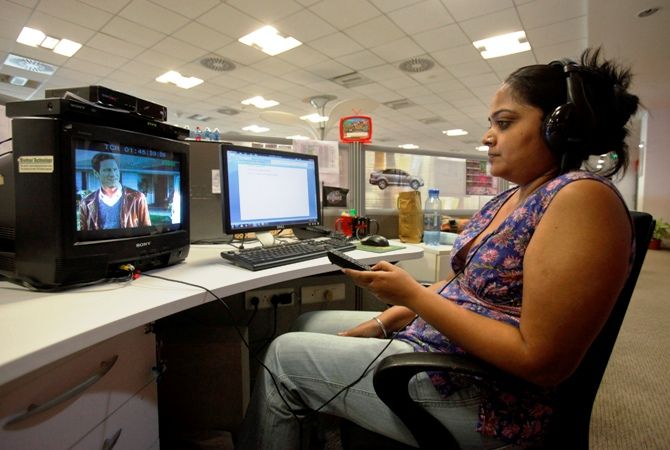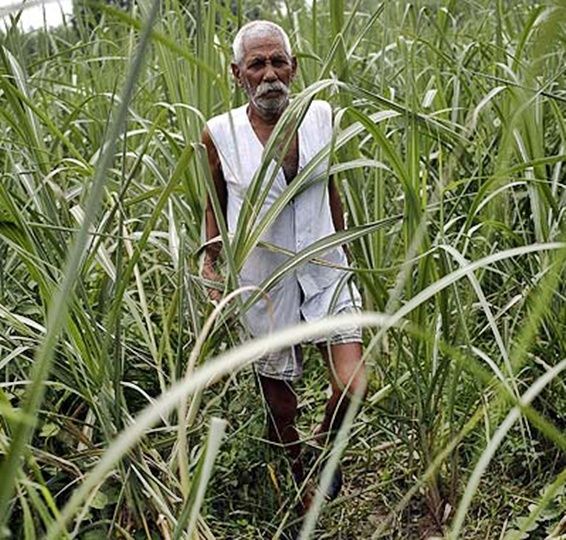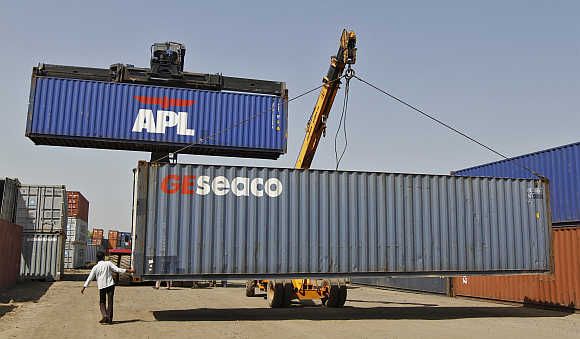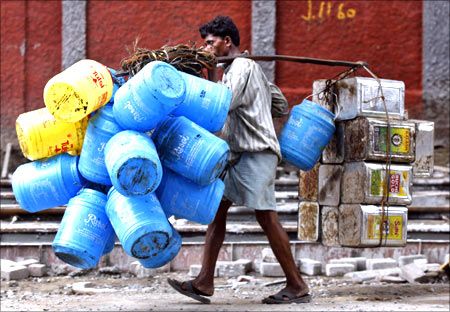The government must strengthen the sinews of the domestic economy through sustained focus on physical, fiscal, human and financial infrastructure, notes Suman Bery.

In his Bharat Ram Memorial Lecture1 delivered in Delhi last month, Reserve Bank of India Governor Raghuram Rajan made some widely noted observations on India's development opportunities in the present state of the global economy.
As in many of his past writings, he noted the persistent difficulties the advanced countries face in returning to buoyant growth and the political tensions that slow growth, stagnant wages and rising inequality have created in those societies.
Many of these trends preceded and indeed precipitated the deep global recession of 2008.
Against this rather sombre backdrop, he warned of the danger that the slogan "Make in India", launched with great fanfare by the prime minister in September, might be misinterpreted.
He pointed to two specific risks. First, that "Make in India" might become excessively focused on boosting manufacturing.
Second, that India will seek to follow the path of exaggerated export-led growth most recently and spectacularly associated with China, but earlier followed by other widely-admired Asian economies.
His caution reflects a view both of difficulties in the demand for exports ("the world as a whole is unlikely to be able to accommodate another export-led China") and India's own genius ("India is different, and developing at a different time, and we should be agnostic about what will work").

With advanced-country demand likely to remain muted for the foreseeable future, he concludes that India's primary orientation will have to be to produce efficiently for the internal market, what he dubs a "Make for India" strategy.
The priority for government action is, therefore, to strengthen the sinews of the domestic economy through sustained focus on physical, fiscal, human and financial infrastructure, rather than subsidising exporters with cheap inputs and an undervalued exchange rate.
The foreign sector, both trade and capital, remains important for infusing competition and capital into the domestic economy but is essentially a sideshow, and not the main event.
While my own anti-mercantilist instincts side with those of the governor, I recognise that his views run contrary to much established orthodoxy among students of economic development.
Accordingly, I will first assess the broader framework within which the governor makes his case, and then turn more specifically to its implications for the manufacturing sector.

Manufactured exports occupy a near-mystical place in the hearts and minds of development strategists, as they are seen to confer multiple blessings.
First, they help poor countries reap economies of scale as production is not limited to the small local market.
This expansion in scale lowers average cost and expands the scale of semi-skilled employment, facilitating the reallocation of labour out of low-productivity agriculture to more productive manufacturing.
Second, they help home-country entrepreneurs learn new skills and techniques through their need to compete in more sophisticated products and markets.
Third, to the extent that such exports represent significant value-added rather than mere screw-driver assembly, they help to ease the balance-of-payments constraint.
Given these perceived (and in many ways actual) blessings, it is no surprise that several Asian countries have chosen to put this whole enterprise on steroids creating the distortions that Dr Rajan rightly fears.

It is also the case that the industrial structure generated through these early interventions casts a long shadow forward, what economists call "path dependence": thus, Japan and Korea, and to a lesser extent Germany, remain excessively dependent on manufactured exports and have not succeeded in infusing similar dynamism into their large but inefficient service sectors.
Yet to warn of the risks is not to deny the promise. Justin Lin, who was Kaushik Basu's predecessor as the World Bank's chief economist, estimated that some 85 million manufacturing jobs were likely to be relocated away from the Chinese eastern seaboard as wages rose in China.
He had earlier thought that India would capture many of these, but now seems keener on sub-Saharan Africa and Asean (Association of Southeast Asian Nations) countries such as Vietnam and Myanmar despite their much smaller populations.
One could further argue that widening inequality and stagnant wages in the advanced countries will continue to provide opportunity for low-cost manufactures from the South, quite apart from the needs of the expanding middle classes of Asia.

So to me, the real question is not whether export markets will continue to exist, but rather whether India will succeed in capturing them within the sector-neutral, capability-centred approach that the governor espouses.
This leads to a second issue: what special priority, if any, should manufacturing enjoy in the government's strategy for economic revival?
On the "Make in India" campaign website2 the goals mentioned include raising the share of the manufacturing sector in gross domestic product (GDP) from its current level of around 16 per cent to 25 per cent by 2022, and creating 100 million new manufacturing jobs over the same period.
As a welcome sign of continuity, these are the same goals as enunciated by the United Progressive Alliance in 2011.
I would make two final points.
The first is that it is easier to export what you already make, and so a low share of manufacturing in GDP more or less predisposes us to a low share of global trade in manufactures (although manufactures constitute a high proportion of our own exports).

The second is that almost all of the focus in the policy and in the debate has been in expanding the supply of manufactured goods, and relatively little on the demand for these goods.
If we accept even partially Dr Rajan's views of the low absorptive capacity of the global economy in the remainder of the decade, and also believe that India will return to high growth, this implies that domestic manufactures will need to displace services in domestic final investment and consumer demand at a fairly rapid rate.
This can only happen if there are big shifts in the relative price of Indian manufactures both vis-à-vis domestic services and vis-à-vis manufactured imports.
That in turn requires major improvements in productivity, which may not be compatible with the ambitious manufacturing employment goals.
Finally, there is the question of whether the private sector, foreign or domestic, is likely to invest in such articles of cheap mass consumption to expand output at the pace that is expected.
These are worthy issues for the new National Institution for Transforming India (NITI) Aayog to ponder.
Suman Berry is chief economist, Royal Dutch Shell. These views are his own












 © 2025 Rediff.com -
© 2025 Rediff.com -